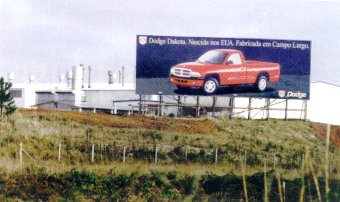|
|
1998’s Alternating Business Climate Currencies: Whiplash Changes Leave Location Winners, Losers in Wake
A Shaky House of Cards
Here’s how the fast-changing global business climate picture was unfolding at press time: Currency Fluctuations Yield
For the moment, though, Asia’s economic turmoil has been a boon for firms with Asian subsidiaries selling to other world regions. Asia’s currencies have depreciated from 25-60 percent against U.S. and European currencies. That’s made the region’s goods and services far cheaper, facilitating competitive undercutting for companies with Asian manufacturing facilities.
Case in point: Mattel, which has less than 5 percent of sales in Asia but manufactures 20 percent of its goods there. There’s also been a worldwide drop in demand for plastic resins, Mattel’s largest manufacturing cost component. Mattel’s strong brand equity has enabled it to pocket most of those cost cuts, say Merrill Lynch analysts. At Hewlett-Packard, “Our extensive manufacturing operations across Asia have been our saving grace, helping offset some of the decline in U.S. export orders,” says spokesman Brad Whitworth. Asia’s Managed Capitalism For example, despite Prime Minister Mahathir Mohamad’s fervent warnings of Western over-reliance, Malaysian policy-makers increased foreigners’ equity stake in Malay trading companies from 30 to 51 percent (though “core industries” remain protected). But Asia’s most substantial location opportunities are in Japan’s newly deregulated financial sector, which was largely a government-backed cartel since World War II. That insularity was particularly pronounced within the lucrative insurance industry, closely tied to Japan’s powerful keiretsu. Shock waves began rumbling through Japan’s insurance sector last year: Nissan Mutual collapsed, and two keiretsu powerhouses, Nissan and Hitachi, said they wouldn’t make good on the $3 billion losses. Soon the shock waves were a sonic boom. Japan’s real estate and stock markets collapsed, and domestic insurers, with estimated fiscal-year losses topping $10 billion, began going belly up. On Apr. 1, financial-sector deregulation followed, creating what Commerz Securities analyst Yushiro Ikuyo calls “the Big Bang.” Japan’s opening up of its insurance industry puts huge location stakes on the table. Japanese on average carry $170,000 in insurance, four times the U.S. rate. All told, the insurance industry controls $2.3 trillion in assets, some two-thirds of Japan’s gross domestic product. Major Players Move In Many have found very willing partners in cash-strapped Asian firms desperately seeking suitors, particularly ones with deregulation experience. Moreover, the Icarus-like plunge of the yen and other Asian currencies has turned acquisitions and joint ventures into virtual bargain-basement sales. Consider GE Capital, which in late July acquired Osaka-based Lake Co., Japan’s fifth-largest consumer finance company, with 1.4 million customers and 564 branches. Once only a player in Japanese auto leasing, GE Capital earlier acquired an 80 percent stake in Ryoshin Leasing (then 52 percent owned by Mitsubishi) and formed a joint venture with Toho Mutual. Elsewhere in Asia, GE Capital acquired a Philippine insurance company and four Thai firms. Another rapid Asian sortie has been mounted by the Travelers Group, which in the last two years acquired U.S. broker Salomon Smith Barney (SSB) for $9 billion and agreed to a $70 billion merger with Citicorp, the second-largest U.S. bank. The Travelers took a 25 percent equity position in Japan’s Nikko Securities and is opening a 1,500-employee brokerage joint venture. In addition, Nikko by yearend will close 20 overseas subsidiaries, transferring them to SSB. Then there’s Merrill Lynch, which bought the 30 branch offices of defunct Yamaichi Securities, immediately hiring 2,000 former Yamaichi employees. Such immediately available labor is a major edge in fast-tracking operations in East Asia, where aging baby boomers are retiring after accounting for a third of the region’s 6.1 percent annual per-capita growth during 1965-90, according to a recent National Bureau of Economic Research study. Fidelity, the largest U.S. mutual fund player, has started selling funds to individual Japanese investors. With huge opportunities, others are certain to also set up Japanese facilities. Japan’s $10 trillion in savings has traditionally gone into banking or postal savings accounts paying only 0.5 percent interest.
IT Plugs In
Tiffany’s Unlikely Diamond
Subtleties Remain
Free Markets Less Free Though damaged, free-market players like Singapore and Taiwan have fared comparatively well. But the yen’s nose-dive triggered major changes in the business climate of Hong Kong, ranked by Heritage Foundation as the world’s freest economy. The most drastic measures have centered around real estate, Hong Kong’s economic linchpin. With unemployment at a 15-year high, Hong Kong has also returned $500 million in real estate taxes to property owners, lowered import and export duties and set up a $200 million credit assistance fund for small and medium-sized firms. Profits held in Hong Kong banks are also exempt from taxes. Nonetheless, the currency crisis remains a stern challenge to Hong Kong’s dollar, pegged to the U.S. dollar at a 7.8-to-1 rate. When Hong Kong defended the dollar by raising interest rates, it shattered the property market, forcing the abandonment of long-held market principles. Says Jan Lee, Hong Kong Shanghai Bank chief economist, “Land prices had to give, or the U.S. dollar peg had to go.” In the short term, the U.S. dollar link will remain intact, many analysts contend. Hong Kongers can immediately switch bank deposits into U.S. dollars. Devaluing the Hong Kong dollar would spur a switching stampede that would decimate the banking system. Russia’s Bearish Impact One major difference: While Asia’s crisis has spurred reforms, Russia’s breakdown may signal reforms’ end. As the ruble collapsed, Russia defaulted on $40 billion in short-term debt and devalued its currency, signaling that its major priority is internal stability, not meeting financial commitments to the outside world. Some analysts feel Russia’s example may spur hard-hit Asian nations to also fend off the market forces. “Some countries are talking about getting out of the global economy, building protectionist walls with native ownership,” says Donald Ratajczak, director of Georgia State University’s Economic Forecasting Center. “But the fastest way to restore capital flows is to allow investors with access to credit to purchase or build resources.”
Says EDS Asia-Pacific President Edward Yang, “The Chinese word for ‘crisis’ comprises two characters, danger and opportunity. Our strategy is to minimize the danger and take advantage of the opportunities.” SS |
| SS Online | SiteNet |
Feedback |
GeoSearch |
©1998 Conway Data, Inc. All rights reserved. SiteNet data is from many sources and is not warranted to be accurate or current.


 OCTOBER/NOVEMBER 1998
OCTOBER/NOVEMBER 1998 The world economy’s business climates have seldom seen whiplash change like 1998’s: The ruble collapsed in ruins, while for many firms with Asian facilities, “the Pacific Rim became the pathetic rim,” says Sung Won Sohn, chief economist for Norwest.
The world economy’s business climates have seldom seen whiplash change like 1998’s: The ruble collapsed in ruins, while for many firms with Asian facilities, “the Pacific Rim became the pathetic rim,” says Sung Won Sohn, chief economist for Norwest.  That could inhibit the West’s championing of free-market business climates. Steep protectionist barriers could be re-erected, a major setback for global location prospects. In late July, for example, the United States upped its tariffs on Japanese steel.
That could inhibit the West’s championing of free-market business climates. Steep protectionist barriers could be re-erected, a major setback for global location prospects. In late July, for example, the United States upped its tariffs on Japanese steel.